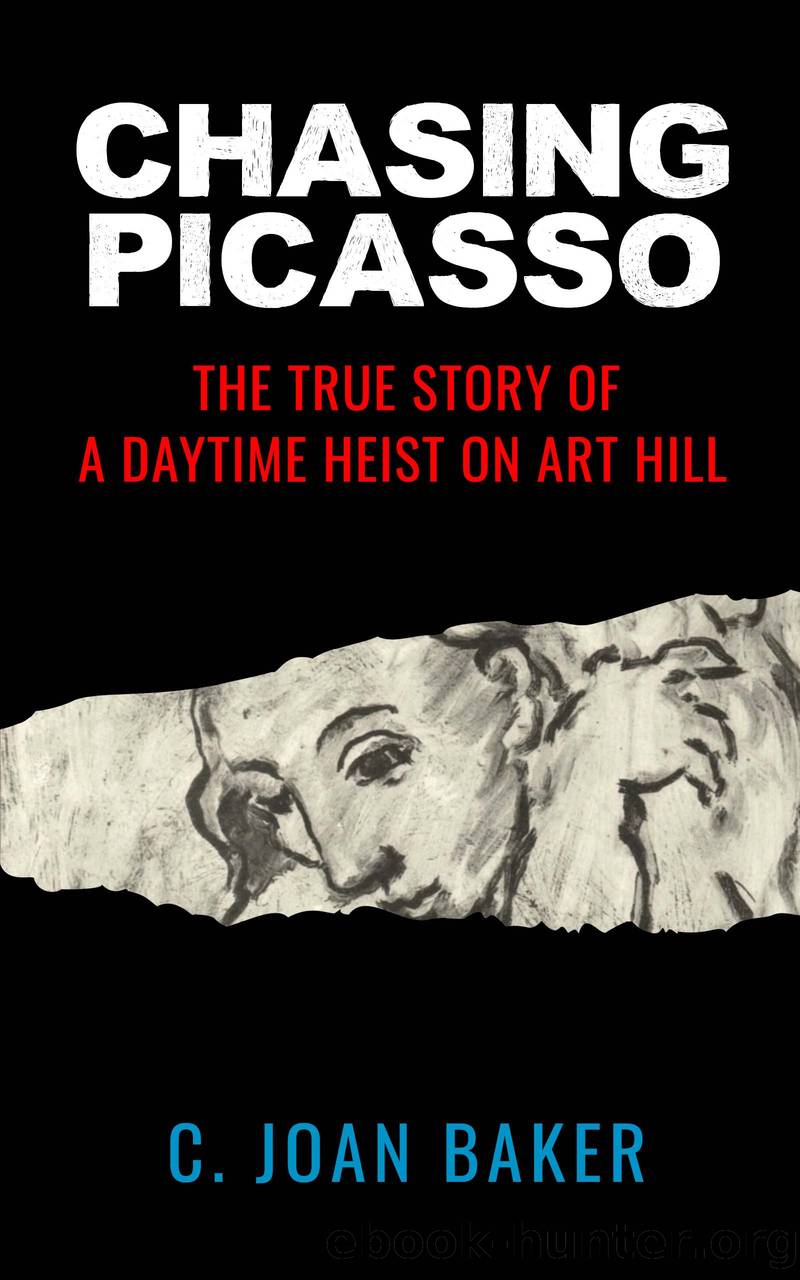Chasing Picasso by C.Joan Baker

Author:C.Joan Baker
Language: eng
Format: epub
Tags: Art crime; heist; art theft; Picasso; organized crime; St. Louis; art museum; Saint Louis Art Museum; TRU008000 TRUE CRIME; Heists & Robberies; ART016000 ART; Individual Artists; General; HIS036010 HISTORY; United States; State & Local; General
Publisher: Strange Books, LLC
Published: 2023-04-02T00:00:00+00:00
Chapter 7
The Art of Fencing
ART MUSEUMS ARE TYPICALLY NONPROFIT, and galleries are often for-profit businesses. When artwork enters the museumâs hands, it is typically the last stop of ownership. On the other hand, art galleries are a place for private art collectors to buy works of well-known artists. Museums and galleries share a love for art and a common source of painâ¦the art thief.
Nude was the cityâs first museum theft of a painting, but Russian School Children might have been the cityâs first gallery oil painting to be stolen. Two months after the Picasso painting vanished from the museum wall, a Rockwell oil painting also disappeared at the hands of a thief.
From 1973 to 1977, thieves targeted one particular gallery on multiple occasions in St. Louis: Arts International, located in Clayton Municipality of St. Louis County. The gallery was part of a chain of galleries that Jacob Sachs* owned in Chicago, New York, and New Orleans. The galleryâs headquarters were in Chicago, leaving daily operations at the Clayton branch to a local manager. The building was located on Maryland Avenue, just three miles west of the City Art Museum. The street was a popular shopping area that boasted opulent jewelry and antique shops. This also made it a hot spot for local thieves.
The gallery featured various exhibits at different times of the year. Norman Rockwell was a favorite theme. Sachs had an exclusive license for Rockwell reprints and often displayed Rockwell lithographs. In June of 1973, the gallery exhibited a Rockwell oil painting, Russian School Children.
Russian School Children was the only Rockwell oil painting for sale in the States when featured at the 1973 summer exhibit in Clayton. Sachs acquired the painting from Danenberg Galleries, which dealt with original Rockwell paintings, in New York City sometime before 1973.
For decades, Rockwellâs art did not carry the stature of Picassoâs art, though they both produced work during the same century. Rockwellâs art depicted American life and was often reproduced into calendars, greeting cards, and other collectibles.
Publishers commissioned Rockwellâs works, and most of them graced the cover of The Saturday Evening Post. The artist was just twenty-two years old when he painted his first cover for the Post and produced 321 covers over his forty-seven-year career with the magazine. He had become the most recognized artist in America.1
As the Post dwindled in popularity, Rockwell left the magazine in 1963 and began producing illustrations for Look magazine. Look was the second most popular magazine, just behind Life magazine and in front of the Post. During his time at Look, Rockwellâs paintings contained more controversial scenes than at the Post, though his style was irrefutably recognizable.
The US and the USSR were in the midst of the Cold War. The October 3, 1967 edition of Look focused on Russia, fifty years after its revolution. The magazine photographed a Rockwell painting, Russian School Children, for the magazine article. It was perhaps the most un-American American painting he had produced in his career.
The painting featured a classroom of Russian children sitting at their desks, eyes forward, and attentive to the lesson being taught.
Download
This site does not store any files on its server. We only index and link to content provided by other sites. Please contact the content providers to delete copyright contents if any and email us, we'll remove relevant links or contents immediately.
The Monuments Men by Robert M. Edsel(1489)
Things Are What You Make of Them: Life Advice for Creatives by Adam J. Kurtz(1455)
The Freelance Manifesto: A Field Guide for the Modern Motion Designer by Joey Korenman(1239)
101 Gag Ideas: Companion to the One Minute Caricature by James van der Keyl(1090)
Find Your Artistic Voice by Lisa Congdon(1061)
Boom by Michael Shnayerson(1026)
The Business of Being an Artist by Daniel Grant(978)
Your Art Will Save Your Life by Beth Pickens(952)
The Lady in Gold by Anne-marie O'connor(946)
Your Inner Critic Is a Big Jerk by Danielle Krysa(939)
Create Your Art Career by Rhonda Schaller(935)
Breakfast at Sotheby's(925)
Seven Days in the Art World by Sarah Thornton(921)
How to Survive and Prosper as an Artist by Caroll Michels(867)
33 Artists in 3 Acts by Sarah Thornton(856)
When Talent Isn't Enough: Business Basics for the Creatively Inclined by Kristen Fischer(840)
Art Held Hostage by John Anderson(831)
Art of the Deal by Noah Horowitz(816)
The Graphic Designer's Guide to Better Business Writing by Barbara Janoff & Ruth Cash-Smith(815)
